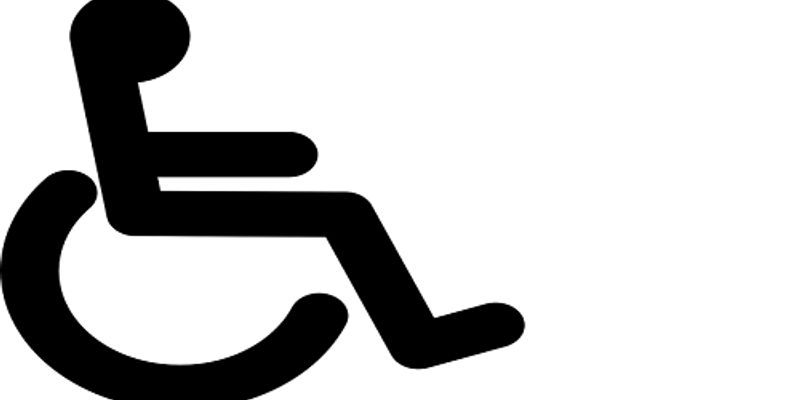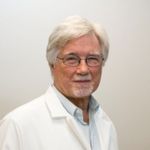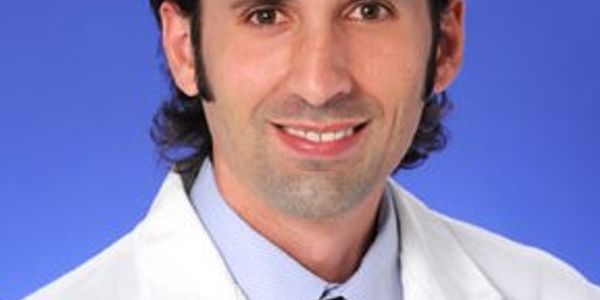Paralysis
Paralysis is the loss of muscle function in part of your body. It happens when something goes wrong with the way messages pass between your brain and muscles. Paralysis can be complete or partial. It can occur on one or both sides of your body. It can also occur in just one area, or it can be widespread. Paralysis of the lower half of your body, including both legs, is called paraplegia. Paralysis of the arms and legs is quadriplegia.
-
On DemandC.E. CREDITSSpeech neuroprostheses have the potential to restore communication to people living with paralysis, but naturalistic speed and expressivity are elusive. Here we use high-density surface reco...JAN 17, 2023 | 9:00 AMDate: January 17, 2023 Time: 9:00am (PST), 12:00pm (EST), 6:00pm (CET) As SARS-CoV-2 infections continue to ebb and flow, other respiratory viruses have made a big comeback on the world stag...MAR 11, 2020 | 12:00 PMApproximately 300,000 people in the United States have a spinal cord injury with many of these individuals experiencing permanent motor and sensory deficits. For individuals with cervical sp...Speaker: Robert Gaunt, PhD , Michael Boninger, MD , Jennifer Collinger, PhDPresented at: Neuroscience Virtual Event Series 2020
MAR 11, 2020 | 12:00 PMBrain machine interfaces (BMIs) aim to help patients with paralysis to use their recorded brain activity to control assistive devices. BMI research requires the collaboration of neuroscienti...Speaker: Tyson Aflalo, PhD , Richard Andersen, PhD , Spencer Kellis, PhD , Charles Liu, MD, PhDPresented at: Neuroscience Virtual Event Series 2020
JAN 01, 2020 | 6:00 AMBrain machine interfaces or neural prosthetics have the potential to restore movement to people with paralysis or amputation, bridging gaps in the nervous system with an artificial device. M...FEB 27, 2019 | 8:00 AMDATE: February 27, 2019TIME: 8:00am PST Pluripotent stem cells (PSCs) can form any tissue or cell in the body, and are the ideal starting material to manufacture...DEC 06, 2018 | 9:00 AMDATE: December 6, 2018TIME: 9:00am PST, 12:00pm EST Induced pluripotent stem cells (iPSC) intended for translational applications need to be of...OCT 30, 2018 | 8:00 AMDATE: October 30, 2018TIME: 8:00am PDT, 11:00am EDT Does your PSC medium support cell therapy? In this webinar, learn about Cell Therapy Systems™ (CTS...JUL 01, 2017 | 12:00 AMDisease-specific human pluripotent stem cells (hPSCs) represent a new chance to unravel cellular and molecular mechanisms of neurological diseases. Along this line, we were among the first to...MAR 16, 2017 | 7:30 AM...AUG 30, 2016 | 8:00 AMThe central nervous system (CNS) is a conglomerate of diverse, interconnected tissues that each contain cell phenotypes specific to their distinct anatomical region. Recent studies have demon...MAR 19, 2015 | 3:00 PMDARPA’s investments aim to leverage brain-function research to alleviate the burden of illness and injury and provide novel, neurotechnology-based capabilities for military personnel an...MAR 20, 2014 | 9:00 AMThe Brain Research through Advancing Innovative Neurotechnologies (BRAIN) Initiative is part of a new Presidential focus aimed at revolutionizing our understanding of the human brain. By acce...Speaker: Story Landis, PhD, Thomas R. Insel, MD, Justin Sanchez, PhD, John C. WingfieldPresented at: Neuroscience Virtual Event Series 2014
MAR 19, 2014 | 8:00 AMThe Brain Research through Advancing Innovative Neurotechnologies (BRAIN) Initiative is part of a new Presidential focus aimed at revolutionizing our understanding of the human brain. By...Speaker: Emery N. Brown, MD, PhD, William Newsome, PhD, Justin Sanchez, PhD, Terrence J Sejnowski, PhDPresented at: Neuroscience Virtual Event Series 2014
On Demand
C.E. CREDITS
Speech neuroprostheses have the potential to restore communication to people living with paralysis, but naturalistic speed and expressivity are elusive. Here we use high-density surface reco...
JAN 17, 2023 | 9:00 AM
Date: January 17, 2023 Time: 9:00am (PST), 12:00pm (EST), 6:00pm (CET) As SARS-CoV-2 infections continue to ebb and flow, other respiratory viruses have made a big comeback on the world stag...
MAR 11, 2020 | 12:00 PM
Approximately 300,000 people in the United States have a spinal cord injury with many of these individuals experiencing permanent motor and sensory deficits. For individuals with cervical sp...
Speaker:
Robert Gaunt, PhD
, Michael Boninger, MD
, Jennifer Collinger, PhD
Presented at: Neuroscience Virtual Event Series 2020
MAR 11, 2020 | 12:00 PM
Brain machine interfaces (BMIs) aim to help patients with paralysis to use their recorded brain activity to control assistive devices. BMI research requires the collaboration of neuroscienti...
Speaker:
Tyson Aflalo, PhD
, Richard Andersen, PhD
, Spencer Kellis, PhD
, Charles Liu, MD, PhD
Presented at: Neuroscience Virtual Event Series 2020
JAN 01, 2020 | 6:00 AM
Brain machine interfaces or neural prosthetics have the potential to restore movement to people with paralysis or amputation, bridging gaps in the nervous system with an artificial device. M...
FEB 27, 2019 | 8:00 AM
DATE: February 27, 2019TIME: 8:00am PST Pluripotent stem cells (PSCs) can form any tissue or cell in the body, and are the ideal starting material to manufacture...
DEC 06, 2018 | 9:00 AM
DATE: December 6, 2018TIME: 9:00am PST, 12:00pm EST Induced pluripotent stem cells (iPSC) intended for translational applications need to be of...
OCT 30, 2018 | 8:00 AM
DATE: October 30, 2018TIME: 8:00am PDT, 11:00am EDT Does your PSC medium support cell therapy? In this webinar, learn about Cell Therapy Systems™ (CTS...
JUL 01, 2017 | 12:00 AM
Disease-specific human pluripotent stem cells (hPSCs) represent a new chance to unravel cellular and molecular mechanisms of neurological diseases. Along this line, we were among the first to...
MAR 16, 2017 | 7:30 AM
...
AUG 30, 2016 | 8:00 AM
The central nervous system (CNS) is a conglomerate of diverse, interconnected tissues that each contain cell phenotypes specific to their distinct anatomical region. Recent studies have demon...
MAR 19, 2015 | 3:00 PM
DARPA’s investments aim to leverage brain-function research to alleviate the burden of illness and injury and provide novel, neurotechnology-based capabilities for military personnel an...
MAR 20, 2014 | 9:00 AM
The Brain Research through Advancing Innovative Neurotechnologies (BRAIN) Initiative is part of a new Presidential focus aimed at revolutionizing our understanding of the human brain. By acce...
Speaker:
Story Landis, PhD, Thomas R. Insel, MD, Justin Sanchez, PhD, John C. Wingfield
Presented at: Neuroscience Virtual Event Series 2014
MAR 19, 2014 | 8:00 AM
The Brain Research through Advancing Innovative Neurotechnologies (BRAIN) Initiative is part of a new Presidential focus aimed at revolutionizing our understanding of the human brain. By...
Speaker:
Emery N. Brown, MD, PhD, William Newsome, PhD, Justin Sanchez, PhD, Terrence J Sejnowski, PhD
Presented at: Neuroscience Virtual Event Series 2014














